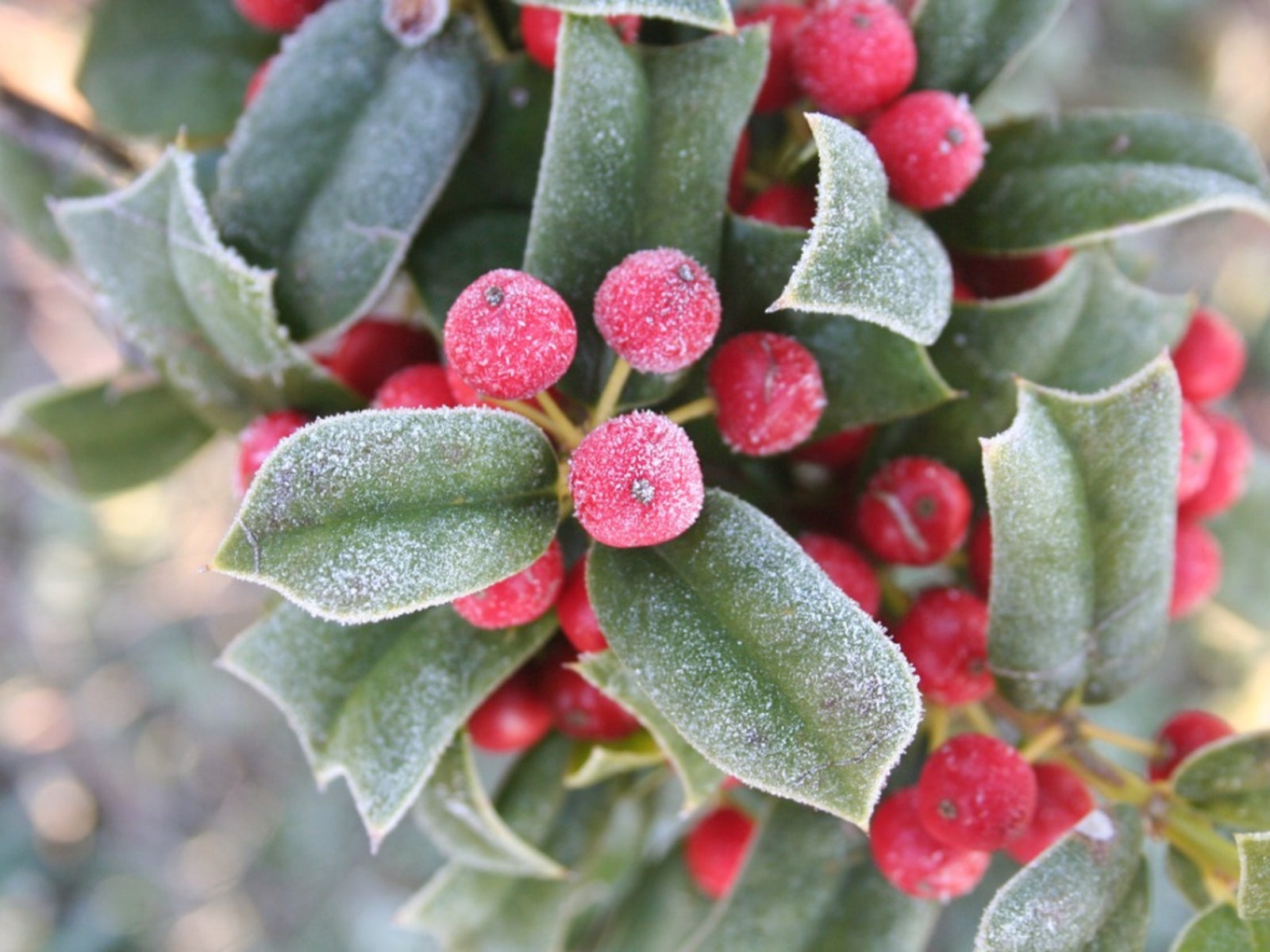Holly Winter Care: A Guide To Holly Winter Protection


Hollies are tough evergreens that can survive punishing cold as far north as USDA plant hardiness zone 5, but that doesn’t mean they are impervious to damage from winter sunlight, freezing temperatures, and drying winds. Winterizing holly properly can make the all the difference, and it isn’t difficult. Read on to learn about caring for holly in winter.
How to Winterize a Holly
Desiccation occurs when moisture is lost faster than it can be absorbed, usually due to harsh winter winds, sunlight, and long periods of cold, dry weather. It is most likely to occur to young hollies during the first couple of winters. You can apply holly winter protection in the form of an anti-desiccant but follow directions closely because applying the products too early can cause more harm than good. In fact, some experts think anti-desiccant products are useless. If you decide to give the products a try, spray holly in late fall or early winter when the plant is completely dormant. Choose a day when temperatures are between 40 and 50 degrees F. (4-10 C.), preferably when no rainfall is expected in the immediate future. You may want to consider wrapping your plants too for further protection. Construct a wind barrier to protect hollies from harsh winds and sunscald. Install three wooden stakes around the holly, then wrap burlap around the stakes. Leave the top open and leave an opening for air to circulate around the tree but be sure the burlap protects the holly from prevailing winds. Don’t place the burlap so close that it can rub against the foliage.
Additional Holly Winter Care
Winterizing holly begins with suitable care. The following tips will help: Surround the holly with a thick layer of mulch extending out to the drip line but leave a 2 to 3 inch (5-8 cm.) span of bare ground around the trunk. Mulch mounded against the trunk can cause rot and may also encourage rodents and other animals to chew on the bark. (If this is a serious problem, wrap hardware cloth around the trunk.) Water hollies well into fall to ensure the plant is well-hydrated going into winter. Cut back normal watering slightly in early fall to allow the holly to harden off, then provide plenty of water from late fall until the ground freezes. However, don’t create undue stress by overwatering to the point of sogginess. Water the tree during the winter if you notice shriveling or other signs of winter damage. If your hose is frozen, use a watering can and apply just enough water to thaw the ground. The holly will be able to draw moisture through the roots.
Sign up for the Gardening Know How newsletter today and receive a free copy of our e-book "How to Grow Delicious Tomatoes".

A Credentialed Garden Writer, Mary H. Dyer was with Gardening Know How in the very beginning, publishing articles as early as 2007.